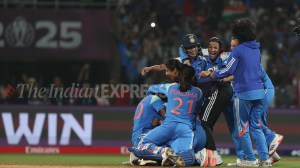Indira and Malik — A no holds barred encounter
NEW DELHI, MAY 30: Marlon Brando, Ingrid Bergman, Satyajit Ray, Devika Rani, Nirad Chaudhury, Vaclav Havel, David Lean, Alfred Hitchcock....

NEW DELHI, MAY 30: Marlon Brando, Ingrid Bergman, Satyajit Ray, Devika Rani, Nirad Chaudhury, Vaclav Havel, David Lean, Alfred Hitchcock…The legends flit in and out of the vast canvas that arguably India’s first female media critic portrays in her book Amita — No holds barred, an autobiography.
The book begins with Amita Malik’s childhood in `Gauhati’ and Shillong, growing up amidst the “bulls and lambs”, the ladies of Calcutta and the “mostly unisex” Aligarh, and then goes on to narrate her career in the media, in print and her life amidst “foreign and Indian” celebrities in far-off places.
One chapter has Malik narrating her innumerable encounters with Indira Gandhi, during her early days in politics and then as Prime Minister of the country.
During emergency, Malik met Gandhi at her office in South Block. “What do you think of the present state of the media in India,” the Prime Minister asked.
“Do you want me to be frank or do you want me to be polite?”“Of course, I want you to befrank,” the Prime Ministertold Malik.“I do not know what came over me but I immediately launched into a graphic description of the state of terror which was then prevailing in the media…”
“I don’t want to sound like a kingmaker, but it is a fact that the very next day the curbs on the foreign press were lifted,” Malik claims.Just before Gandhi was to meet the famous Japanese film director Akira Kurosawa, she asked Malik “Quickly, tell me something about Kurosawa. I want to be able to talk to him intelligently.”
Malik dutifully obliged and obviously the famous director was impressed by Gandhi and later mentioned to Malik “Your Prime Minister has taken a very keen interest in my films”.
The book, however, ends with a poignant, yet refreshingly candid account of her life with her husband Iqbal Malik, their stormy engagement, eventual marriage and estrangement.
But Malik is at her narrative best while reminiscing the days spent in the traditional Chang Bangla house in Guwahati where she wasborn. “I was born in the twenties in a picturesque Chang Bangla, a traditional Assamese house on stilts, in Gauhati, the capital of Assam. It had a thatched roof, wooden floors and a sprawling garden with endless varieties of flowers and fruit,” she writes.



- 01
- 02
- 03
- 04
- 05




























